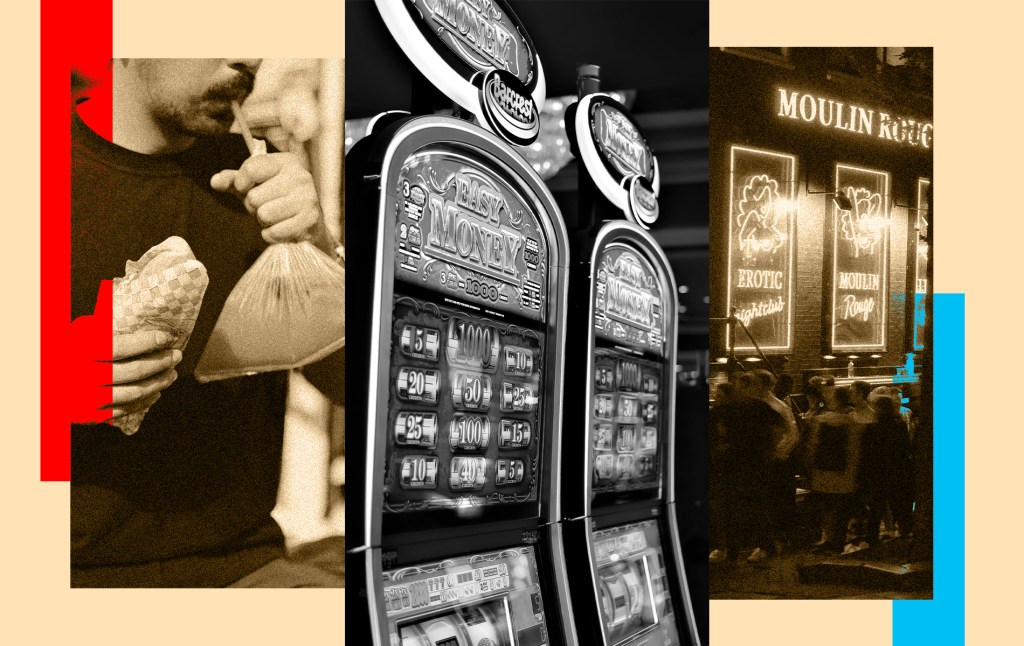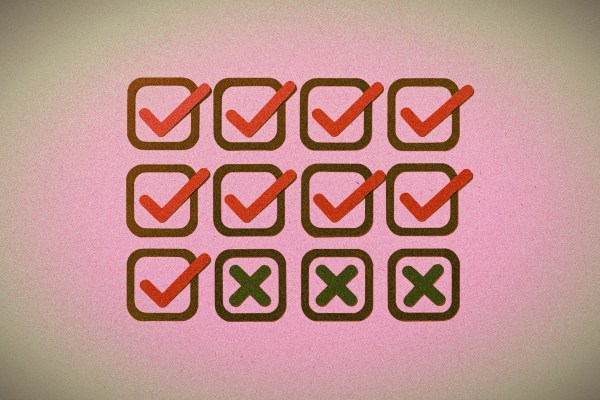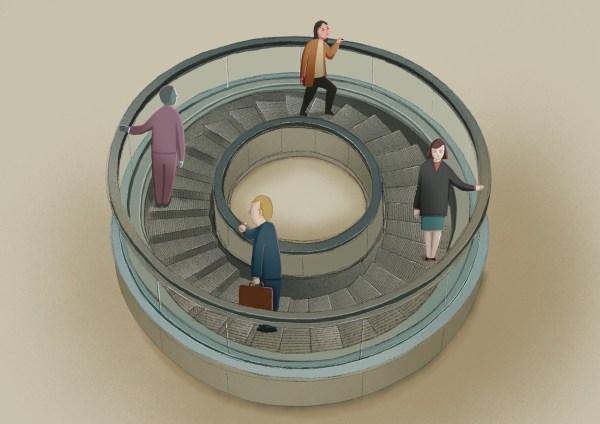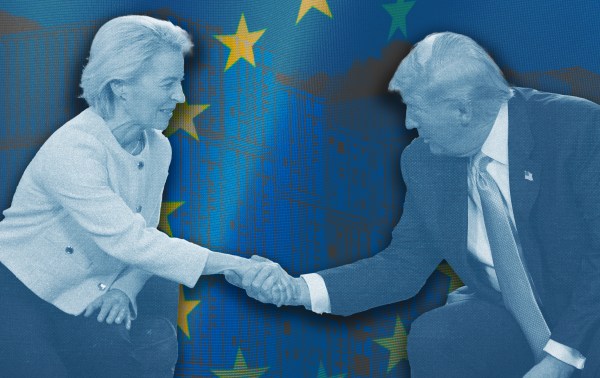It’s never a good sign when a phrase is composed of brands. Take the elocution “You can now Klarna your DoorDash Chipotle.” Chipotle, most readers will know, is a popular fast-casual burrito place; DoorDash is a food delivery service. “Klarna” is the verbified form of a “buy now, pay later” (BNPL) service that allows users to delay paying for their purchases without (initially) any interest.
The idea of Klarna-ing of your DoorDash Chipotle raised some eyebrows in late March, when the BNPL provider and food delivery firm announced a partnership. Paying for someone to deliver a burrito is already silly; dividing that payment up into four easy installments is absurd.
But it’s not just burritos that we’re BNPL-ing. Loan values rose from $2 billion in 2019 to $24.2 billion in 2021; as of 2023, 1 in 5 Americans had used a BNPL service. According to a recent Billboard analysis, 60 percent of Coachella music festival attendees BNPL’ed their tickets. “Are we all living beyond our means now?” Claire Lampen recently asked in The Cut. The answer seems to be yes.
Commentators like Lampen tend to focus on the predatory nature of debt—burrito debt piles on to student debt and credit card debt, as if these obligations were imposed involuntarily. What’s missing from the discussion, though, is a frank admission of what’s happening when people Klarna their Chipotle, or BNPL those Coachella tickets: They’re giving in to temptation.
Indeed, in the 21st century, a whole array of temptations has quietly emerged from the economic shadows. It goes beyond the burrito—products like pot, gambling, and pornography are widely available and widely consumed. The potency of these temptations, moreover, has steadily risen, making them harder and harder to resist.
That’s a problem, because while temptation goods have gotten better, our ability to control ourselves hasn’t. The uncomfortable reality of human variation in self-control has meant a growing share of the population is unable to stop itself from clicking that “buy now, pay later” button.
Policymakers have long papered over these concerns, amid a bipartisan consensus that temptation isn’t such a big deal. But our collective unease with taking out loans on burritos suggests that’s wrong. And if it is, then perhaps we should think more deeply about how temptation and self-control play into our public policy.
Temptation is an experience everyone has had: the donut or cigarette we want but shouldn’t have. Defining temptation, though, is trickier—what makes something tempting?
In a 2010 paper, economists Abhijit Banerjee and Sendhil Mullainathan offer a helpful definition. “Temptation goods,” they explain, are those products that make our present selves happy, but that we do not wish for our future selves. As the authors put it, “We may take great pleasure from smoking a cigarette today or eating a whole box of donuts, but knowing that we will consume them in the future even though they are bad for us does not make us happy (and indeed, may even serve to get us depressed).”
Temptations, in other words, create a dissonance between our present and future selves. What is good for the one is not necessarily good for the other. This is different from other goods. I both want to ride a bicycle, and I want my future self to ride a bicycle too. But while I might want the cake today, I wish my future self would abstain.
Some products are uniquely tempting. Alcohol, tobacco, and other addictive drugs might be included in this category. So might pornography, gambling, or certain highly processed foods (think the Big Mac). These products are distinguished both by being powerfully rewarding in the present and harmful if consumed repeatedly.
Because innovation is rewarded by greater consumption, temptations get more tempting over time. Two hundred years ago, for example, hand-rolled cigarettes were expensive and hard to come by; the advent of machines for their rolling eventually reduced prices and increased availability. BNPL schemes are probably the result of rising wealth increasing everyone’s access to capital—and additional capital can encourage irresponsible behavior.
Over the past two decades, a series of legal and cultural changes have accelerated this process. Take sports gambling. Prior to a 2018 Supreme Court ruling, sports betting was essentially illegal nationwide. Today, sports betting is legal in 39 states and the District of Columbia. Almost 40 percent of Americans have bet on a game, and the industry is worth nearly $14 billion.
Recreational marijuana—which, as I’ve noted previously in The Dispatch, is addictive and risky—went from illegal nationwide in 2011 to legal in 24 states today. Since the first medical marijuana laws went into effect, the number of daily or near-daily marijuana users has risen from fewer than a million to nearly 18 million. Today there are likely more daily pot smokers than daily alcohol drinkers.
Or consider pornography. Since a 1997 Supreme Court ruling granted online porn broad First Amendment protections, it has become a more profitable enterprise than Netflix. An estimated 1 in 8 websites serves porn, and 3 in 4 teenagers report having seen it. The rise of performer-driven sites like OnlyFans has continued this growth, with “stars” collectively making more annually than every NBA player combined.
The temptation model even explains the surging popularity of BNPL services. Normally, when we buy something, we pay the full price up front. BNPL schemes, though, offer the immediate gratification of the purchase now, but delay the cost until later. That pushes people to buy products they might not otherwise have purchased. That’s why the majority of Klarna’s revenue comes from merchant fees, not interest payments.
These products are all, of course, temptations. They feel good to use and consume. But because they can hurt us in the long run, we might not want our future selves to use them, even as we partake.
While temptations have become more potent and more numerous, our ability to resist them has not grown in proportion. As a result, more and more of the population is likely to be subject to their risks.
The faculty of resisting temptation—saying no to the donut or cigarette—is self-control. The child who doesn’t eat the marshmallow, the student who does his homework instead of playing video games, or the married man who says no to an affair all have self-control. More abstractly, self-control is the way we enforce interpersonal preference consistency over time; it’s how present me avoids doing things that I don’t want future me to have done.
People, unsurprisingly, vary in their ability to control themselves. Tests designed to assess self-control suggest as much—on a commonly used scale from 1 to 5, for example, the average person scores 3.26, but with about a point and a half variation between the extremes. Similarly, people vary in how attractive they find stimuli associated with addictive drugs, with that attraction predicting “subjective craving for drugs, prospective drug use, and likelihood of relapse.”
It’s not obvious why people have different levels of self-control. Conscientiousness—the personality trait that includes self-control—is at least partly genetic. Early childhood experience may contribute, as may the cultivation of habits. And we almost certainly vary in self-control over the course of our lives—young people have less of it than older ones.
Regardless of why, we do vary in self-control; there’s a distribution of ability to resist temptation. And as our temptations increase in attractiveness, more and more of that distribution will be drawn in by them.
Perhaps you or someone you know struggles to say no—to alcohol, or to cigarettes, or to fatty foods. Your or your loved one’s ability to resist is partially a function of some native tendency to self-control. But it is also a function of what choices you or he are being offered. More choice is not necessarily good when the choice is in temptations.
Both the right and the left struggle with this fact. On the right, free-market libertarianism regards the regulation of temptation as anti-capitalistic nanny statism. Unrestrained markets tend to increase consumer welfare; why should the state decide what consumers consume? Moreover, isn’t part of being a free American choosing our risks?
Those on the left are theoretically more willing to regulate. But they are wary of making judgements about individuals’ self-control. It’s fine to talk about big business preying on the poor, but the problem with people buying Coachella tickets on credit is not that they’re poor. It’s that they’re irresponsible—a normative judgment many progressives are unwilling to make. Moreover, many of the most prominent temptations—like porn and pot—are things no self-respecting leftist would criticize, for fear of being compared to a censorious social conservative.
In spite of this bipartisan consensus, there is also some collective discomfort with all of this newly available temptation. A majority of Americans now say pot is bad for its users and society. Twenty states have imposed laws requiring age verification for access to porn—laws inspired, in part, by Zoomers complaining that they were exposed to porn too young. Majorities are concerned about legal betting’s effect on sports’ integrity. And everyone thinks it’s pretty weird that you can take out a loan for a burrito.
What we need is a coherent framework for thinking about why temptation is a legitimate object of public policy. Are there times when restricting our choice can make us better off?
In a 2001 paper, economists Faruk Gul and Wolfgang Pesendorfer asked readers to imagine a woman choosing what to eat for lunch. “In the morning, when she feels no hunger, she prefers the healthy, vegetarian dish,” they write, “but at lunchtime, she experiences a craving for a hamburger.”
Here is an opportunity for self-control: She can see the hamburger and get the salad anyway. But there’s a cost associated with exercising that self-control. Even if she gets the salad, ultimately, our hypothetical diner still is worse off than if the hamburger had never been available to her, because she put in the time and effort to resist temptation.
Are there times when restricting our choice can make us better off?
There’s another option, though: Our diner can pre-commit. She can stop her future self from giving into the craving by, for example, setting a lunch date at that new salad place. This approach generalizes, as with the dieter who avoids keeping snack foods in her house or going shopping while hungry. Such pre-commitment strategies have a long history in economic theory, but the underlying insight remains the same: we can make ourselves better off, over the long run, by reducing our future self’s choices.
More formally, if temptations impose a cost on us simply by being available, then strategies that remove them from the menu of available options make us better off in the counterfactual. Or, more simply: when the choice is a temptation, sometimes less choice is better.
Indeed, there is a sense in which less choice makes us freer. The person who is addicted to drugs is meaningfully less free, by virtue of his compulsion, than the person who is not so addicted. The addict’s freedom is enhanced, not diminished, by the absence of the right to choose heroin.
This is the case for the most basic strategy for taking a temptation off the menu: prohibition. As I’ve written elsewhere, prohibition gets a bad rap. Capital-P Prohibition probably worked for alcohol, with research finding it significantly reduced cirrhosis and casting doubt on the idea that it increased violence. And small-p prohibition certainly works to reduce the availability of hard drugs like fentanyl and methamphetamine. The old prohibitionist status quos for sports gambling and pot seem pretty reasonable against the new free-for-alls.
Not every temptation good can or should be banned. Polling indicates that Americans don’t want porn prohibited, and there’s zero appetite for a crackdown on burritos. But regulation can increase the frictions associated with accessing these products. That can look like the age-verification laws now spreading in state legislatures, or IP-level opt-in; or it can mean limiting the number of BNPL loans issued to a given customer.
Such approaches have their challenges, and must be carried out carefully. But if anything, it is those who ignore the harsh realities of self-control and temptation who are incautious. And we listen to them at our peril.










Please note that we at The Dispatch hold ourselves, our work, and our commenters to a higher standard than other places on the internet. We welcome comments that foster genuine debate or discussion—including comments critical of us or our work—but responses that include ad hominem attacks on fellow Dispatch members or are intended to stoke fear and anger may be moderated.
With your membership, you only have the ability to comment on The Morning Dispatch articles. Consider upgrading to join the conversation everywhere.